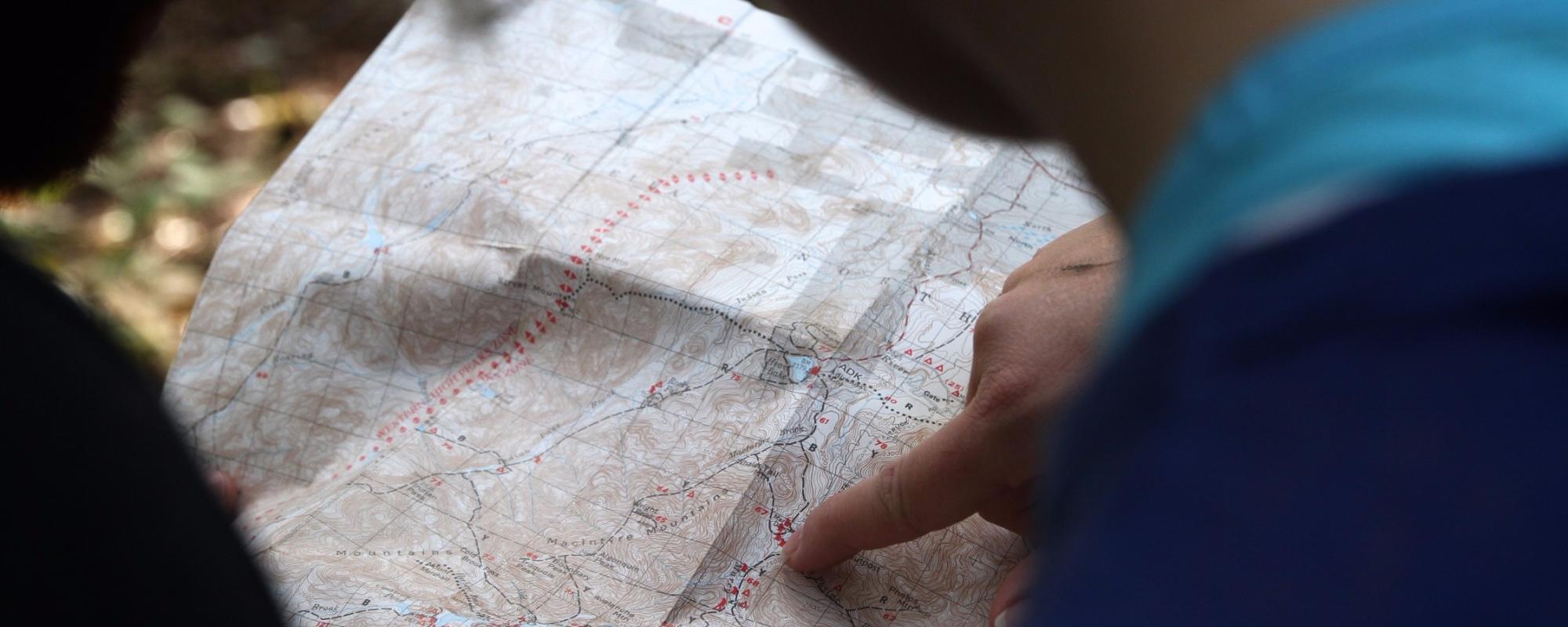Introduction
Firstly, explaining something that can be confusing: mapping for people who are blind or have impaired vision is variably referred to as Tactual Mapping or Tactile Mapping — the terms are interchangeable. In Australia the term Tactual Mapping is most commonly used, but documents produced elsewhere in the world may use the term tactile.
Tactual maps adhere to the normal rules of cartographic composition, but are different in that:
- The map design has to be altered to allow for the inability to use colour, the need to use large text fonts and tactile restrictions on the number of line weights and pattern which can be used.
- Maps for people with normal sight are often very complex and can be ‘crowded’ with information. People with seriously impaired vision are not able to read congested maps.
- Maps for people with impaired vision are able to be made using the ‘normal’ alphabet, but the font size needs to be large, and the maps can be printed using normal printing processes. These are often referred to as bold print maps.
- Maps for people who are blind need to be made using the braille alphabet, and the map and braille needs to be raised above the paper – this needs a ‘special’ printing process. These maps are referred to as tactual maps or raised image graphics.
In the 1980’s Australia lead the world in developing specifications and techniques for Tactual Mapping. These documents are now out-of-print, but they are still current and relevant.
At this time, Australia also produced the world’s first national atlas for people who are blind or vision impaired. It contained maps with text in both normal (roman) font and braille. The associated informative commentaries were also supplied in both roman and braille formats.
All these publications contain a great deal of information which is also relevant to sighted map users and people interested in map construction.
Please note: the contact information contained in these documents is now out-of-date. To obtain current information please contact Geoscience Australia, email: clientservices@ga.gov.au.
Australian National Specifications for Tactual Mapping
In 1985 the National Mapping Council of Australia published its Special Publication 11 – A National Specification for Tactual and Low Vision Town Maps. At the time this was a ’world’s first’ and it is still used today.
Specifying Tactual Mapping Symbols
In 1986 a companion publication to the Tactual Mapping Specification was released by the Division of National Mapping (now part of Geoscience Australia) – Symbols for Tactual and Low Vision Town Maps.
This defined the symbols which could be used in maps for people with poor or no vision. The publication comprised two section – one using normal (roman) text for the visually impaired; and one using braille and raised symbols/maps for people with no vision.
This is downloadable in .pdf format
Tactual Map User Guide
In 1987 the Division of National Mapping published another companion document to the Tactual Mapping Specification – A Map User Guide To Reading Tactual and Low Vision Maps.
This offers a comprehensive overview of mapping techniques and how they can be adapted to suit people with visual impairments.
The Tactual Map User Guide can be downloaded in .pdf format (5.9 MB).
Tactual Atlas of Australia
The two volumes of this atlas can be downloaded in .pdf format:
Please note that the content of some of these maps may now be out-of-date.
Volume 1 - General Reference and Physical Environment (25 MB)
Volume 2 - People and Industry (15.6 MB)

